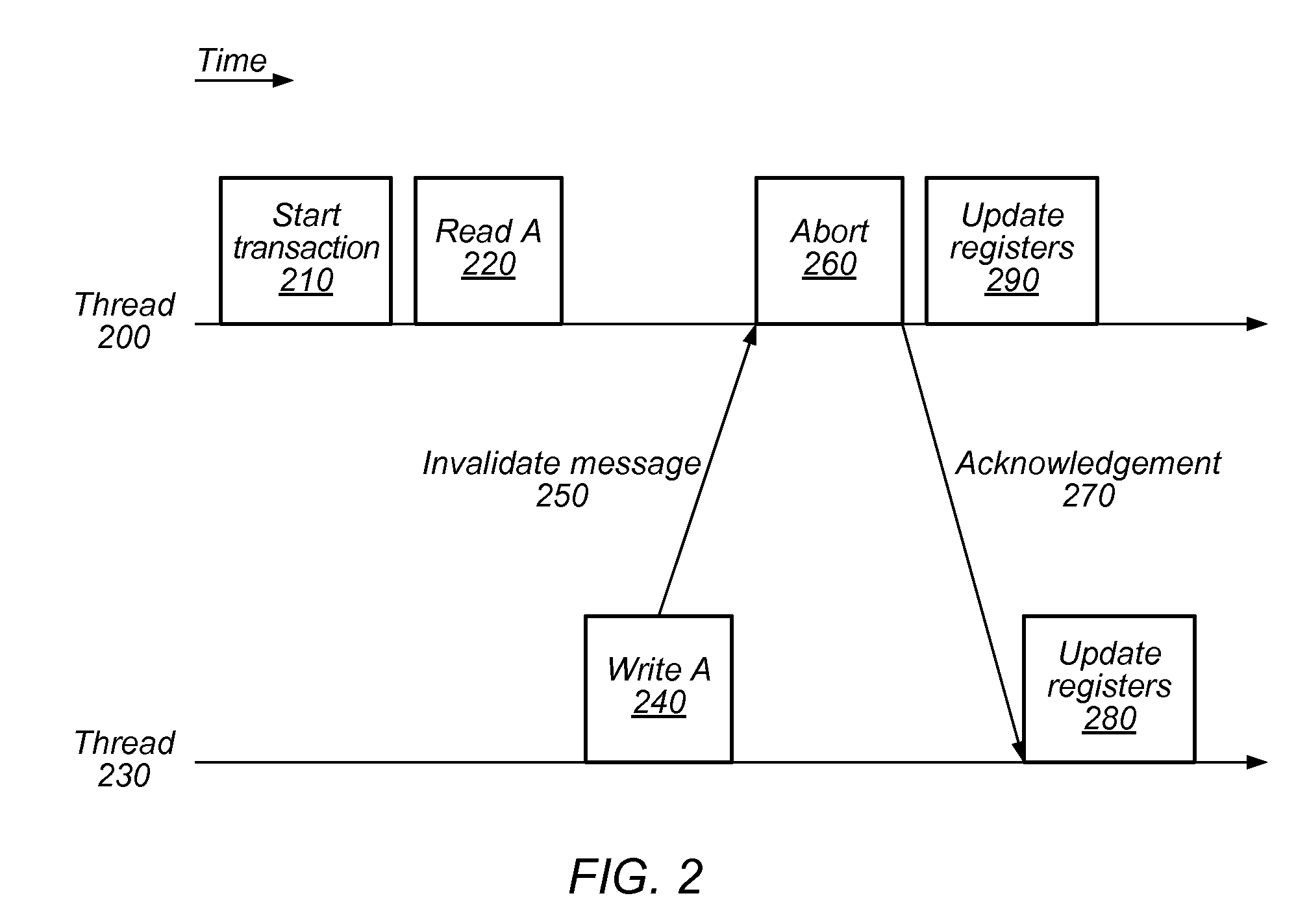Method and System for Hardware Feedback in Transactional Memory
a transactional memory and hardware feedback technology, applied in the field of multi-threaded computer systems, can solve the problems of race conditions, performance limitations, and ineffective traditional approaches to boosting cpu performance, and achieve the effects of reducing the complexity of softwar
- Summary
- Abstract
- Description
- Claims
- Application Information
AI Technical Summary
Problems solved by technology
Method used
Image
Examples
Embodiment Construction
[0020]To achieve high performance or other system goals, multi-threaded transactional memory systems may employ some form of contention management among threads. For example, an aborted transaction may be retried using mutual exclusion or via transactional lock elision after some delay. In this example, the decisions to retry a transaction, whether to do so using mutual exclusion, and / or how long to delay before making another transactional attempt, may be determined by contention management mechanisms. These mechanisms may take many forms, including thread-local backoff schemes, global thread cooperation, coordination through a central manager, or others. Though several example embodiments described herein include a software-based central contention manager, those skilled in the art will appreciate that the techniques described herein may be applicable to any software-based, hardware-based, or hybrid software / hardware contention management mechanisms, including local ones.
[0021]In ...
PUM
 Login to View More
Login to View More Abstract
Description
Claims
Application Information
 Login to View More
Login to View More - R&D
- Intellectual Property
- Life Sciences
- Materials
- Tech Scout
- Unparalleled Data Quality
- Higher Quality Content
- 60% Fewer Hallucinations
Browse by: Latest US Patents, China's latest patents, Technical Efficacy Thesaurus, Application Domain, Technology Topic, Popular Technical Reports.
© 2025 PatSnap. All rights reserved.Legal|Privacy policy|Modern Slavery Act Transparency Statement|Sitemap|About US| Contact US: help@patsnap.com



